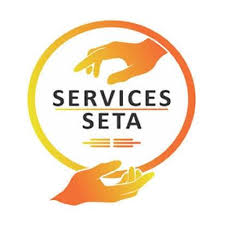
Seta Learnerships and Internships: Exploring the Path to Practical Training and Career Advancement
In South Africa’s competitive job market, gaining hands-on experience has become a vital part of career development. One of the most effective ways to bridge the gap between education and employment is through Seta Learnerships and Internships. These programs are structured and supported by the Sector Education and Training Authorities (SETAs), aiming to build a skilled, capable workforce across various industries.
This guide provides a detailed overview of Seta Learnerships and Internships what they are, how to apply, and how to succeed. Whether you’re a recent graduate, unemployed youth, or someone looking to enhance their qualifications, this article will equip you with everything you need to make the most of these opportunities.
What Are Seta Learnerships and Internships?
Understanding Seta Learnerships
Seta learnerships are structured programs that combine theoretical learning with practical work experience. The main goal is to provide learners with a nationally recognized qualification that meets the demands of specific industries. These programs usually last between 12 and 24 months and are designed for various fields such as healthcare, finance, construction, IT, and agriculture.
Each learnership includes time spent in a classroom and on-site training within a company, ensuring that participants develop relevant, job-ready skills. Learners often receive a monthly stipend during the duration of the program.
Understanding Seta Internships
Internships provided through SETAs are short-term training opportunities that focus on workplace experience. Typically lasting 3 to 12 months, these internships target young graduates or individuals looking to gain exposure in a specific industry. Unlike learnerships, internships are not always linked to a formal qualification, but they offer a valuable foot in the door for future employment.
Both learnerships and internships under SETA provide real opportunities to develop skills, connect with potential employers, and enhance employability.
Benefits of Participating in Seta Learnerships and Internships
Engaging in Seta Learnerships and Internships offers multiple advantages:
- Practical Experience: You gain hands-on experience that textbooks can’t teach.
- Industry-Relevant Skills: Programs are aligned with industry needs, improving your chances of employment.
- Qualifications and Certification: Learnerships lead to NQF-aligned qualifications, which boost your resume.
- Income Support: Most participants receive stipends, which can ease financial stress while learning.
- Improved Employability: Many learners and interns are offered full-time jobs after successful completion.
How to Find Seta Learnerships and Internships
Identify Where to Search
The first step is knowing where to find reliable opportunities. Use these sources to stay updated:
- SETA official websites (like Services SETA, MICT SETA, HWSETA, etc.)
- National Skills Fund and Department of Higher Education portals
- Career websites like SAYouth, Indeed, and Careers24
- Social media pages of companies and SETAs
- Local government and municipal youth employment centers
Subscribe to email alerts or newsletters to avoid missing application windows.
Research the Right Program for You
Before applying, understand which sector matches your qualifications and career goals. For example, if you’re interested in IT, explore MICT SETA programs. Look at entry requirements, duration, and benefits of the learnership or internship. Make sure your qualifications meet the criteria.

How to Apply for Seta Learnerships and Internships
Build a Competitive CV and Cover Letter
Your CV should be neat, concise, and tailored to the position. Highlight any previous experience, volunteer work, or relevant coursework. Your cover letter must show your motivation and alignment with the program’s goals. Always customize each application—avoid generic submissions.
Complete the Application Form Correctly
Carefully read each section of the application. Ensure all information is accurate. Double-check spelling, contact details, and educational background. Incomplete or incorrect forms are often rejected.
Prepare and Organize Supporting Documents
Commonly required documents include:
- Certified copy of your South African ID
- Updated CV
- Academic transcripts or certificates
- Proof of residence
- Motivation letter or cover letter
Ensure all documents are certified and not older than three months.
Submit on Time and in the Correct Format
Follow submission guidelines—some programs require online submissions, others accept email or hand-delivered applications. Always keep proof of submission and track the deadline.
Succeeding in the Application and Interview Process
Prepare for Interviews
If your application is shortlisted, you’ll be invited for an interview. Be ready to answer questions about:
- Your goals and aspirations
- Why you applied for the program
- What you know about the industry
- Examples of problem-solving or teamwork
Dress professionally and be punctual. Show enthusiasm and a positive attitude.
Demonstrate Passion and Willingness to Learn
SETA interviewers often look for candidates who are motivated and eager to grow. Share your long-term goals and how the program fits into your career plan. Speak clearly and confidently about your strengths.
Follow Up Professionally
After the interview, send a thank-you email. This leaves a lasting impression and shows professionalism. If you don’t hear back after a few weeks, a polite follow-up is acceptable.
Common Mistakes to Avoid
- Submitting incomplete applications
- Missing deadlines
- Using the same CV for every application
- Forgetting to certify documents
- Failing to research the program or SETA
Avoiding these mistakes can significantly increase your chances of being accepted.
Additional Resources and Where to Get Help
For more support in finding and applying for Seta Learnerships and Internships, explore these options:
- Visit your nearest NYDA (National Youth Development Agency) center
- Connect with career counselors at TVET colleges and universities
- Join Facebook and WhatsApp groups that share updates about learnerships
- Use career portals with advanced search filters for your field of interest
Conclusion
Seta Learnerships and Internships are powerful tools for building a strong, sustainable career. They bridge the gap between education and employment, giving you the experience, skills, and credentials needed to thrive in the workforce.
Applying successfully requires effort, planning, and persistence. From researching the right program to preparing a professional application, each step matters. With thousands of applicants competing for limited spots, your preparation can make all the difference.
Leave a Reply